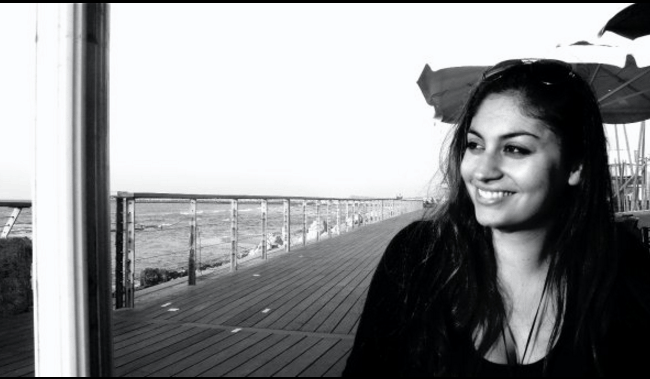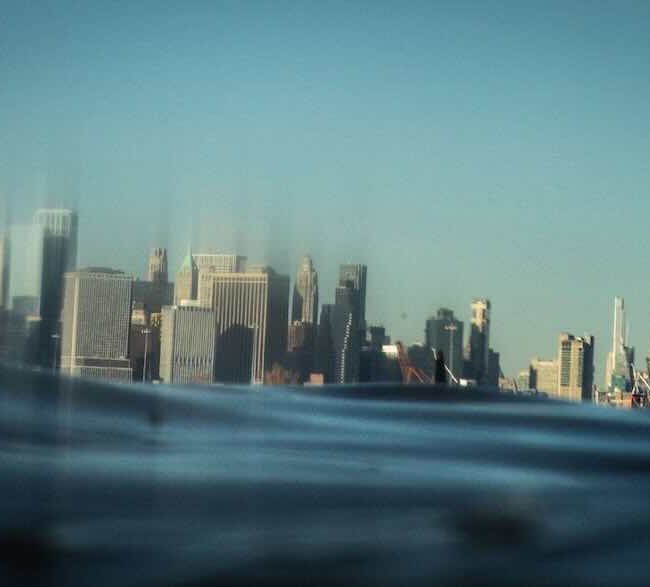A Conversation with Jeanie Finlay & Freddy McConnell (SEAHORSE)
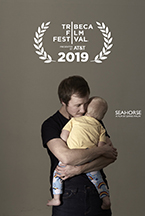 I met with director Jeanie Finlay on Sunday, April 28, 2019, at the 2019 Tribeca Film Festival, along with subject Freddy McConnell, to discuss her inspiring documentary Seahorse (which I also reviewed). In the film, Finlay follows McConnell, a trans man, as he stops testosterone treatments to become pregnant and give birth to his own child. It’s a difficult, but extremely empowering, journey, and we are right there for all the big beats (including the birth). Here is a condensed digest of our conversation, edited for length and clarity.
I met with director Jeanie Finlay on Sunday, April 28, 2019, at the 2019 Tribeca Film Festival, along with subject Freddy McConnell, to discuss her inspiring documentary Seahorse (which I also reviewed). In the film, Finlay follows McConnell, a trans man, as he stops testosterone treatments to become pregnant and give birth to his own child. It’s a difficult, but extremely empowering, journey, and we are right there for all the big beats (including the birth). Here is a condensed digest of our conversation, edited for length and clarity.
Hammer to Nail: Jeanie, did you always intend to entitle your film Seahorse from the start, or did that title just begin to make sense as you went along?
Jeanie Finlay: We didn’t have a title for a while. I just sort of went into making the film, seeing how it felt. Eventually, “Seahorse” just seemed to really fit. It was something that felt good for Freddy. And, you know, this is a film that’s made with Freddy, not about Freddy. And that’s really a sort of important distinction. A lot of times trans people don’t have agency in their own…the storytelling around their lives. So, it was really important for us, particularly because Freddy started the project, and brought me in to do it. But yes, “Seahorse” was…seahorses are the only animals where the male carry live young. It just seemed like poetry, really.
Freddy McConnell: And it’s a widely used term in the community. You know, “seahorse dads,” “seahorse babies,” that kind of thing. So, yeah.
HtN: I did not know that this was a common term, but that makes sense.
FM: I mean, common in as much as anything can be common in a trans male community, which is obviously very small. But certainly, it’s something that we take a lot of pride in. So, yeah, it’s great.
HtN: So, I was going to ask Jeanie how she found the story, but it apparently originated with you then, Freddy, and you brought Jeanie in. How did you two meet?
FM: So, when I was thinking of sharing my story, I thought, quite early on, that I wanted to try and do it on a big scale, and I thought I would need to work with a filmmaker and a bigger team. Also, I just thought that if I was doing it myself, I would probably give up as soon as things got hard. I’m a journalist. I work at The Guardian, so I went to our head of documentaries, Charlie Phillips…
HtN: Who has been on my podcast, The Fog of Truth, because we love The Guardian docs. They’re wonderful.
JF: We’re going to see Charlie tomorrow in Toronto, at Hot Docs. But we’ve really missed having him here because he was really like…he was the catalyst for everything, wasn’t he?
FM: Yeah, pretty much. He set it all up, you know, facilitated me meeting Jeanie, and we met a few directors, but certainly Jeanie was the one who, immediately, there was just chemistry, and she kind of explained the film back to me better than I’d explained it to her in the first place. And I mean, that’s extraordinary for, you know, someone who is cisgender, and not familiar with any of this stuff. And so, that was a huge sign to me that it was going to be good to go forward together.
HtN: Jeanie, may I ask how Charlie knew you?
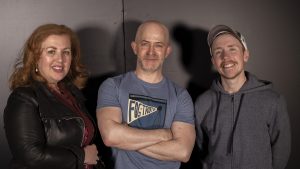
Filmmaker Jeanie Finlay, our Chris Reed and film subject Freddy McConnell
JF: I’ve known Charlie from back in the day. I made … I got my first film commission when I was six months pregnant, and my daughter’s now 15. So, I’ve made eight feature films. But that first film I made, like hardly anyone saw it before it went on TV. And one of the only people to interview me…I got into one film festival, Big Sky, in Missoula, Montana. I remember being in a motel room in Missoula, and I took a call from Charlie Phillips because he interviewed me about the film. And then, when we met, I was like, “Oh my God! You’re great.” And we just connected. Like, we’re great friends. We’ve worked…Charlie’s had lots of different roles in the documentary communities and, honestly, he’s just a great guy. So I jumped at the chance to work on a project that he would be involved in. And also, it’s a film that would be the first feature commissioned by The Guardian. Well, the first feature that they’ve been involved in. That just seemed wonderful.
HtN: So, Freddy, once you decided to bring Jeanie in as a filmmaker, what additional challenges to what was already a very personal, at times raw, journey for you did having her catalog it all pose for you, do you think? How did that change the experience for you?
FM: The thing that I’m remembering is this feeling of, “Oh, well, you know, it’s weird right now to be filmed. The camera seems very obvious and present, but I’m sure that will get better with time. You know, I’ll just get used to it.” And I didn’t. And I’m not sure…I’m not sure you can. And I’m not sure it’s even necessary. But, you know, certainly, it was a process that I was very aware of the whole time. And that was good in a way, but stressful, and it was good also to feel like it was active, constantly changing, and improving, and deepening the relationship between me and Jeanie. Because I think, ultimately, it led to a better film being made. But it was really hard, as well. And I never got to the point where I wanted to stop or completely pull out, but I lent heavily on my mom and my wider social-support system to be able to continue. It was intense.
HtN: Your mom is amazing, by the way.
FM: Yeah, she’s great, isn’t she? Well, it’s an understatement, but yeah, she’s a legend.
HtN: What was your discussion around filming the actual birth, which is really a remarkable moment, and extraordinarily personal?
JF: I think we were always going to include the birth. Making the film was hard, and there were real moments in this film that were harder than anything I’d done before. But there was always an understanding that, to make a film about this journey, we had to try as hard as we could to make the birth happen. And that’s not an easy thing to do, especially if you’re working in a public hospital with healthcare professionals and … you know. At first, they said “No,” and then we went down and met them, and I was like, “Hi! It’s just going to be me! And here’s the camera.” And we talked to them about what our intentions were, and they couldn’t have been more welcoming after that.
But yeah, there was a lot of…I was written into Freddy’s birth plan, with the understanding that Freddy could ask me to leave at any point at all, and that it would just be me in the room, and that I would have one camera in the corner on a tripod; I wouldn’t move around. So I had like a paparazzi lens, and a little magic arm. (laughs) And then, we hooked up the camera over the pool, because there were so many risks involved. I mean, I knew from my own experience that birth isn’t always straightforward. Like, I had a really different birth to the plan I wrote. You know, you have no idea what’s going to actually happen. So, I never even thought we’d…I thought it was a really strong possibility we wouldn’t get it. You know, I might not get to the hospital on time. I camped out in [the town of] Deal for two weeks, in case Freddy went into labor early.
And then, it seemed to me if I could get the camera over the pool, it could be a way…I just wanted it to feel intense and emotional, and to show everything, but also feel private, which is like a paradoxical sort of statement. But I hoped that that’s what we achieved, like that low light in the pool, it was so perfect. And filming it was so intense. And when we edited that scene, my editor, Alice Powell, is brilliant. I love working with her, and we had a really strong idea of how we wanted the birth to play out in the edit, and … but I found it really, really emotionally overwhelming, and would quite often cry, like to the extent I couldn’t edit it. So, I would give instructions, leave the room, and then come back in. For me, it just brought back a lot of my own giving birth.
HtN: It does feel very private, so I think you succeeded in that. And we feel, not in a bad way, but almost like a voyeur looking at something that is really between Freddy and the people there. And it really is a remarkable moment of cinema.
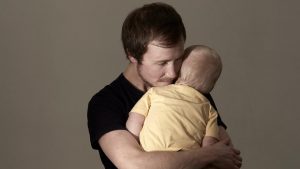
Freddy McConnell in SEAHORSE
FM: Yeah. I think it helps that I was almost completely unaware of the cameras because of the way it was done, because of my boundaries, in that moment, being entirely respected. I think that comes across, almost? The idea that I’m just: 1) sort of oblivious; and 2) like completely consenting at the same time. Way, way back, when I first thought about sharing the story and trying to make a film about it, I made the decision completely by myself that it would have to include the birth scene. And I thought if I’m not OK with that, then I shouldn’t go down this road, because I understand, as a journalist myself, and a storyteller myself, like you just need certain things.
And so, I spent a long time getting comfortable with the idea without any external pressure because when I was thinking about it, no one else knew I was thinking about it. So that was good. And yeah, like the fact that I didn’t have my glasses on, so I literally just couldn’t see what was happening, was really helpful. So, my memory of my birth experience doesn’t include a camera, which is great. So that’s perfect, you know.
JF: Yeah. I didn’t want him…though, I would say that the idea of a fly on the wall is a load of rubbish. That’s why you hear my voice. Because I’m there. I’m a person. This is a relationship. So it’s important to acknowledge that when you see me focusing or like adjusting the iris. And that’s on purpose. Well, my bad camera work’s not on purpose. (laughs)
HtN: (laughs) No, no…everything’s on purpose.
JF: It’s a decision to keep that in the film. But, with the birth, I didn’t want my presence to change a really important experience.
HtN: Yeah. Well, again, it’s remarkable. And were you the only one filming the whole time? Was there other crew, and not just in the birth scene, but throughout the film?
JF: I filmed the birth on my own, but I had a DP [Director of Photography], Richard Jephcote, who’s brilliant. He came to sort of hold my hand and help set the cameras up because we were…I thought we were going to have some time when we got to the hospital. And [Freddy’s mother] Esme was there, and she just said, “Now! You’ve got to go now.” So, he put the stuff on the tripod because I was just like, “OK. Right. Let’s get in there.” But I filmed the birth on my own. It was extraordinary to film.
And then, a lot of the film was just me, Freddy, and whoever, just on our own. And then we had about three or four other DPs…or assistants.who would come in and shoot stuff if we couldn’t always be there. And we also did…like Freddy and I live 5 hours away from each other, so I started recording our phone calls because they…you know, when you hold a phone, it’s so intimate, and it felt like another way of us finding intimacy in telling the story to each other.
HtN: And then you include those as voiceover over images, and that works. So, there are a number of times when you cut to flocks of birds swarming. They’re quite visually beautiful. Beyond just cutaways from what we’re seeing, did you have a particular intention in mind for showing birds like that?
JF: There are a lot of nature shots and abstract imagery, I suppose, but they all derive from the nature that’s in the film. And I really believe, as a filmmaker, that you have to live with the film you’re making and allow it to suggest the way to make it to you. So, I’m a long-distance runner, and I was training for a half-marathon while I was filming. And I spent a lot of time on my own when I was down there, away from my family, and I would go on these long training runs along the coastline of Deal, thinking about what we’d filmed, and what was to come. I just allowed my mind to think about the atmosphere, the emotion that we’d experienced, and how that might look visually.
So, sometimes it’s just instinctive or I have…I sound like an old hippie, but I just think it’s about being emotionally vulnerable and open, to allow the visuals that you need to tell the film to appear, themselves, to you. And the birds, the nature, helps tell the seasons, the passing of time. But also, the birds felt to me like an overwhelming sense of dysphoria, or of depression, and also like a shifting energy, because this is moving all the time.
HtN: And where did you get all the seahorse footage?
JF: So, I had to seek advice from my American cameramen. Half the seahorses in the film are British, and half of them are from Rhode Island, at RISD [Rhode Island School of Design], at the Nature Lab. There’s a filmmaker I work with on all my films named Stewart Copeland. He’s from Tennessee, and he’s gone back to school and is now at RISD. And so, we’d talk regularly. I’d say, “I really need to shoot some seahorses.” And he’s like, “I’ve got some. I can hook you up.” He’d just go and scoop them out of the ocean, and then like…he said, “You need to hold them in your hand. They look like a piece of gum, and then you put them into the water, and they’re just astonishing.” So I was like, “Yeah, OK. Great.”
HtN: So, not Stewart Copeland, the drummer of The Police, then…
JF: (laughs) Well, I mean, he is a drummer, but no, he’s not the same one.
HtN: So, how are things now? We know when we end the film, Freddy, that you’ve just given birth to your son. How is he now and how is your life, now that you have him?
FM: Yeah. Well, I guess I can say that it’s wonderful, and it’s exhausting, and all the things that it’s like to have any baby. But also, an important thing for me is that this is a film about my process of becoming a dad and not really about my life as a dad. I’m really looking forward to my son growing up, and getting older, and understanding everything about where he came from, and how loved he is, and all that sort of thing. And also making a decision perhaps to continue the story, where it includes him and his life, and…but that’s very much a decision for him to make.
HtN: Maybe one day he’ll become a filmmaker and use this film as the archival material for the new film.
JF: (laughs) Yeah! Oh, my God. Can you imagine?
FM: (laughs) Yeah.
HtN: Well, congratulations on the film. It’s really beautiful.
FM: Thank you.
JF: Thank you for taking the time.
– Christopher Llewellyn Reed (@ChrisReedFilm)
Like what you see here on Hammer to Nail? Why not pay just $1.00 per month via Patreon to help keep us going?








